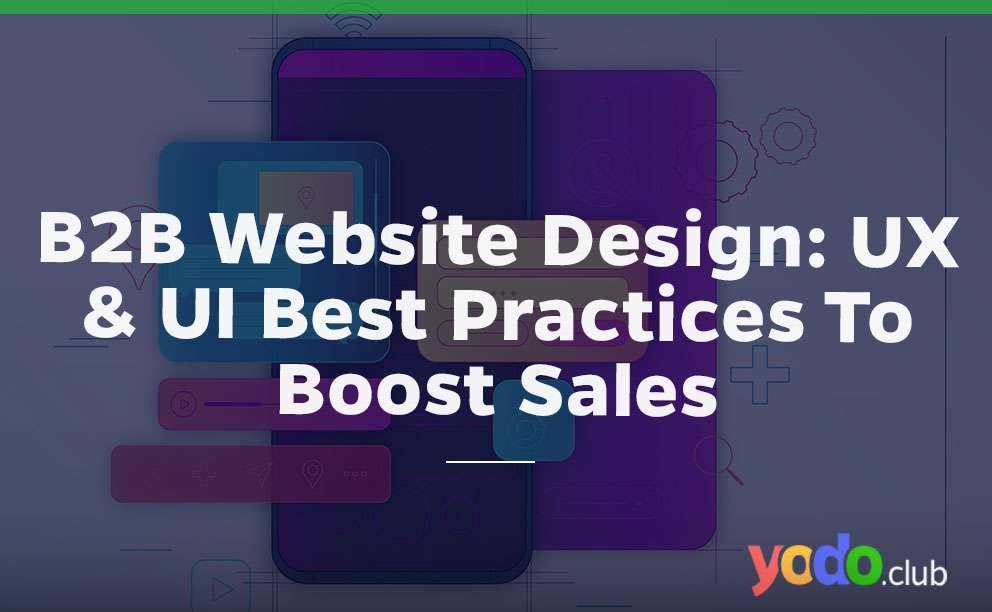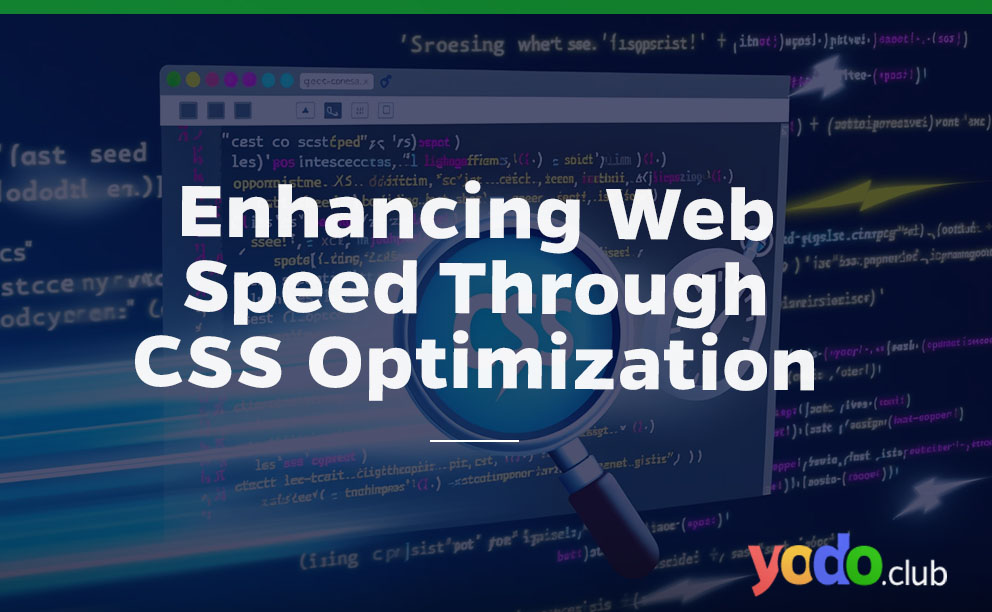A website can be a powerful digital marketing tool for B2B companies to establish strong ties with their clients and raise brand recognition.
A B2B website’s UX and UI may help potential consumers at every stage of the buying process and enhance lead generation.
You may convert new users into leads by utilizing UX and UI design strategies that benefit B2B websites and clients.
Table of Contents
What is B2B Website Design
An attractive, personalized digital platform with integrated marketing and communication for your business attracts your target customer through effective B2B web design. In contrast to B2C websites, business-to-business (or B2B) websites frequently attract a wide range of decision-makers with different responsibilities and requirements.

In What Way Does B2B Differ from B2C
It’s crucial to give clients more relevant and beneficial buying experiences. The ability of brands to engage with people in fresh, more meaningful ways requires creativity. The secret to successfully developing and putting into practice the most pertinent UX (user experience) and UI (user interface) web design selections are understanding these distinctive qualities and the needs of your target audience.
Decision Making
Most importantly, like B2C customers, B2B clients find a likelihood of buying for several weeks. The reason is that it involves different people from vendors and the company itself.
Standards for Products and Services
B2B transactions sometimes involve expensive commodities or service agreements. The goods and services offered on the websites frequently have particular criteria and are specific. Since clients don’t buy one-time on B2B websites, their choices may have long-term effects. They continually invest in long-term supplier contacts that comprise follow-ups, support, and potential upgrades and extras.
Content Prerequisites
Multiple attribute decisions and research influenced B2B user experience. B2B websites are required to offer a far greater variety of content than is typical in the B2C market. In addition, a B2B website must provide specific information so an early prospect who is only browsing the site to see what’s offered may quickly and readily understand.
Target Market
B2C consumers often make purchases for their businesses. As a result, they employ a one-person decision-making process, in which a single person offers the budget and approval, explores the alternatives, decides, makes the purchase, completes the transaction, gets the shipping, and utilizes the goods. In B2B, on the other hand, these phases could include several individuals from various departments. The phrases “choosers” and “users” are, therefore, often employed by B2B salespeople.
A B2B website must respond to several user types with distinct demands. This increased complexity, therefore, only supports the case for B2B websites emphasizing usability in their UX design.
It would help if you also implemented security measures in the meantime to protect against DDoS assaults, cyberattacks, etc.
Features | Business-Business | Business-Customers |
Decision Time | Take several weeks | Short duration |
Decision-Making | Involve multiple people | Include single person |
Sale Cycle | Long | Short |
Purchase Size | Big | Small |
Type of Content | Detailing | Have fun to attract customers |
Target Market | Businesses | Customers |
Management | Account manager deals with problems | Customer support team handles issues |
Pricing Method | Multiple levels | Single level |
Website Structure | Provide access to account dashboard | Purpose to attract consumers |
Objective | Relationships | Product |
Approach | The way of thinking is logical, planned and depends on needs. | Touch the emotions of customers by foreseeing their wants. |
Why is UI/UX Practices Important in Business-to-Business?
The customer values that you understand what they require from you in addition to providing the most satisfactory online user experience possible and the effects it will have on their organization.
Your customer is using your goods to help them with their work-related activities. They will be grateful that you optimized a website for them, increasing their trust in you and the business or product you are offering.
Your consumer will think your product is a waste of their time if you create a site that is difficult to use, ugly to your target demographic, and unwieldy. They can believe that using your website hinders their work and might be driven to look for an alternative.
It is crucial that your website’s visitors like their experience because, if they don’t, they will undoubtedly seek elsewhere.
You must base the UX design on the client’s expectations. The interface must be simple to use. In a sense, customers must understand how to use your website. If you succeed in doing this, your B2B customers will have no trouble reading, scrolling, and interacting up to the conversion.
It would help if you focused on both the broad picture and the more minor aspects since failing to provide a great user experience on the website might harm your business.
B2B Website-UX/UI Best Practices
To increase sales, you must consider user experience and user interface tips that are:
1. Show Expertise in Solving the Clients’ Problems
In the business world, customers are more towards that how you will find out solutions to their problems. Your clients reach you due to the company’s crisis and limited resources, time, or skills. The customers want results from you for every simple or complex question. Because of this, always highlight these subjects on your B2B website and show that you are fully knowledgeable about their problems and possible solutions.
Its points to noting customers’ issues while presenting your goods or services to understand their queries.
Find out which factors can be the primary key features of your company strategy, then promote them on your website’s homepage and other suitable pages.
In the current situation, the price can be a crucial factor that involves:
-
- Great result for product delivery
- Timeframe for the start of services or consultation
- Goods and services with a focus on customization,
- A distinct feature set,
- Perceived excellence,
- Suitability with currently offered goods or services
- The company’s location,
- Delivery times and shipping costs.
Case studies, testimonials, reviews, or other ways is a proof to show how you bring the solution to customers’ queries. This ground is critical for getting paying customers. In other words, they help to generate leads.

2. Know Your Website Audience
You can’t design an engaging website if you don’t know their thinking and intentions.
Many companies oversight their web visitors while designing a web or webpage. The firm forgets to consider the wants and desires of the users.
Quantitative and qualitative research helps categorize the various online users visiting your site.
When you think out of the box, it will turn the people into leads.
3. Develop a Customer Related Website
People usually do not want to speak with the team on the business-business web. Instead, they inquire about other things that should be a priority.
-
- Am I where I should be? How reliable is this business?
- Is this the ideal solution for me? What benefit would I get from it?
- What must I do to make a wise choice?
- Has anyone else made the same choice as I have?
The solution is to know the purchaser experience on your website. A web/UX strategy maker may help you in this regard. Then, you can analyze the client’s desires during decision-making:
-
- Knowledge
- Consideration
- Decision-Making
A customer journey map helps in web infrastructure and navigation that are user-friendly.

4. Maintaining Customer Engagement
In business to business marketplace, the products are not sold to the buyers right away. B2B is a long sale cycle that must be capable of providing detailed information necessary for the sale. Therefore, content strategy is more valuable for B2B websites. Content increases SEO value and catches repeat users on the web page.
In other words, optimized content works like a card to acquire more leads and is suitable for Google.
5. Make a Positive First Impression
First impressions have the power to create or ruin potential business deals. People assess a company’s ability based on the appearance of its website. A well-designed website establishes credibility and inspires confidence. Less is more a principle that UI designers should bear in mind, as crowded designs and poor information architecture will only create confusion. Because of this, this idea aids in the design process in prioritizing user interface (UI) components and, as a result, lessens the number of unneeded parts on every page design.
6. User Interface Design
Every UI or web designer should remember that a B2B website designer must show professional knowledge and skills rather than being a trendsetter. Given that many design trends come and go, carefully assess if fashionable design patterns and visual aesthetics promote a message of consistency and dependability. In addition, pay attention to the fundamental design concepts, such as visual hierarchy, negative space and balance, and element affordance, which aid consumers in understanding your website.
No matter where your company is in terms of originality, it’s crucial to have a straightforward interface design. By acting in predictable ways, simple interaction models conform to people’s mental models. Websites are necessary for business clients to simplify their operations and provide rapid, straightforward answers to their inquiries. Although inventive designs might be lovely, simplicity is required.

7. Discreet Hints
Improve the usability of your user interface by adding subtle clues. Even when consumers believe a website contains what they are looking for, scrolling requires work, and most of the time, they only do it if the right visual signals are there. The placement of necessary items on a web page might influence whether or not users scroll. More material may be below if cues, such as headers or text, protrude into the display’s viewing area.
8. Time of Loading
Verify how quickly your website loads. Users leave a website if it takes longer than six seconds to load. Remove unwanted components and material that seriously affect page performance to prevent that. Slow or problematic parts that take too long to load affect user experience and visitors’ views of your business. When designing for business audiences, optimize file sizes and reduce loading times.

9. Voice Tonality
On your website, adopt a logical, impartial tone. Avoid using too many worthless sales terms and marketing slang. Business clients desire a simple technique that accurately summarises the company’s operations without exaggeration. In addition, participants get the impression that the firm has nothing to hide thanks to easy access to information and objective comparisons of goods or services.
10. Include Great Content
Use components like headings, subheadings, large type, bold text, highlighted text, bulleted lists, illustrations, and captions when writing and presenting material to make scanning easier. Short and to-the-point material should be reported. Avoid sending too much text; it might be daunting and overwhelming for readers. Instead, split up long paragraphs of material into smaller ones and write in clear, primary language.

11. About Us Page
Regardless matter the size of your business, provide the About Us section. Sometimes, small and medium-sized companies overlook the importance of having an About Us page on their website.
The About Us page is crucial for businesses whose brand is not well known. However, well-known brands may afford to ignore this part.
12. Navigation
Users appreciate consistent navigational frameworks, especially in time-sensitive enterprise conditions. Users can perceive their present position within the site’s structure and recognize alternative possibilities with consistent navigation, making it simpler to access information and maintain notes of their location. Make that the names and groups of the links in the header and footer menu are consistent across desktop and mobile applications.

Wrap Up
Remember to establish a B2B website design for your target audience, whether you employ all of these techniques or just a few.
You won’t be able to avoid a lack of interest without that understanding, despite all of the UX/UI design tactics.






 & Passion.
& Passion.